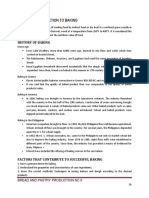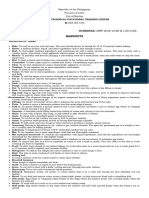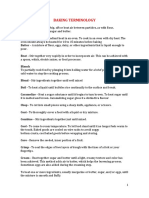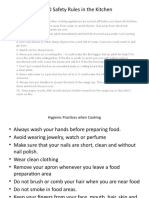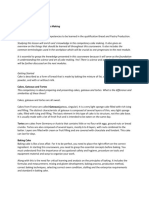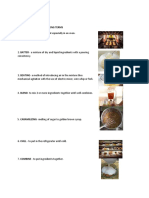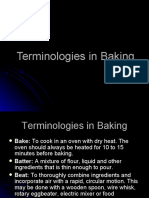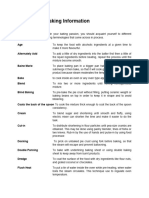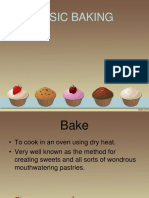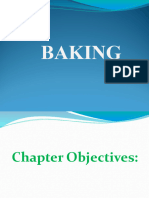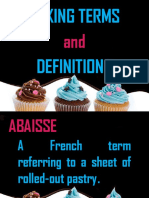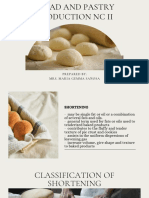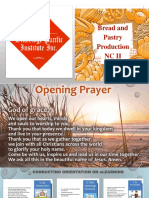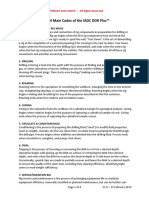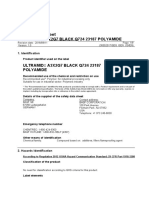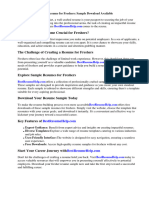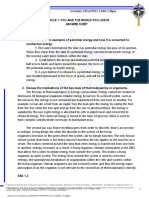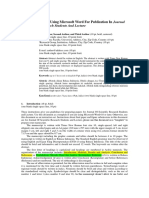0% found this document useful (0 votes)
97 views12 pagesBread and Pastry Production Ncii: Prepared By: Mrs. Maria Gemma Sañosa
This document defines and explains various baking and pastry production terms used in the baking industry. It provides over 40 definitions for common baking terms ranging from how to bake, beat, cream, cut in, knead, proof, sift, steam, and whip ingredients. It also defines types of icings, how to preheat an oven, and cooking techniques like baking blind, caramelizing, combining, crimping, dusting, and folding in. The document serves as a reference guide for bakers to understand industry terminology.
Uploaded by
John Cedrick PalayonCopyright
© © All Rights Reserved
We take content rights seriously. If you suspect this is your content, claim it here.
Available Formats
Download as PDF, TXT or read online on Scribd
0% found this document useful (0 votes)
97 views12 pagesBread and Pastry Production Ncii: Prepared By: Mrs. Maria Gemma Sañosa
This document defines and explains various baking and pastry production terms used in the baking industry. It provides over 40 definitions for common baking terms ranging from how to bake, beat, cream, cut in, knead, proof, sift, steam, and whip ingredients. It also defines types of icings, how to preheat an oven, and cooking techniques like baking blind, caramelizing, combining, crimping, dusting, and folding in. The document serves as a reference guide for bakers to understand industry terminology.
Uploaded by
John Cedrick PalayonCopyright
© © All Rights Reserved
We take content rights seriously. If you suspect this is your content, claim it here.
Available Formats
Download as PDF, TXT or read online on Scribd
/ 12


